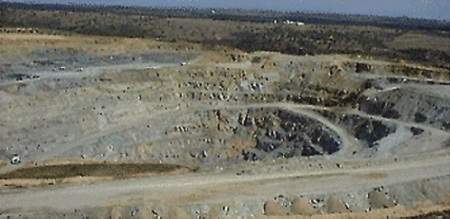Los Frailes zinc, copper, lead and silver mine is approximately 45km west of Seville in southern Spain. The mine was operated by Boliden Apirsa SL, then a wholly owned subsidiary of Boliden Ltd, but following a major tailings dam failure in 1998, the operation was initially suspended, and subsequently closed.
The Los Frailes orebody was discovered in 1988, 1km east of the company’s then principal asset, the Aznalcollar open-pit zinc mine. Production ceased at Aznalcollar in 1996, after depletion of its reserves, the mining equipment was transferred to Los Frailes, and the concentrator was modified to treat the new mine’s ore. By December 1997, Los Frailes had attained full rated mine output of 4Mt/y and was successfully milling the new ore.
In April 1998 Boliden Apirsa was obliged to halt the operation after the tailings dam failed. Not only did this deprive Boliden of a large part of its total metal earnings, but the company also incurred substantial clean up and compensation costs. Together with problems at the Myra Falls operation in Canada and at the Lomas Bayas project in Chile, this led to massive financial losses and a consequent restructuring exercise called the Capital Management Program (CMP), whereby Boliden management is now based in Stockholm, Sweden.
Although Apirsa was able to recommence production during 1999, the concentrator ran into technical problems with the then-available ore. In 2000, Boliden decided to cease operations when the current pit was worked out, which happened in September 2001. Under the terms of the closure agreement with personnel and the Andalucia government, Boliden bought some equipment and transferred it to the Aitik open pit mine in Sweden.
GEOLOGY AND RESERVES
The Iberian Pyrite Belt is a 230km-long east-west mineral belt, well-known for its massive sulphide deposits. The deposits are in rhyolite-hosted pyroclastics as either mineralised pyroclastics or pyritised zones.
As of January 1999, Los Frailes had proven and probable ore reserves totalling 43Mt and grading 3.7% zinc, 0.3% copper, 2.1% lead and 58g/t silver. Measured and indicated resources totalled a further 30Mt at similar grades.
OPEN-PIT MINING
Los Frailes used conventional open-pit mining methods to produce ore at a rate of 4Mt/y. Blasted ore was loaded using electric and hydraulic mining shovels into 240t-capacity haul trucks for transport to the primary crusher.
ORE PROCESSING
To meet the needs of the Los Frailes mine, the capacity of the Aznalcollar concentrator was increased from 2.3Mt/y to 4Mt/y. Significant modifications to the mill included the introduction of autogenous grinding, conversion of the ball mills to secondary pebble mills and the installation of new and larger flotation cells. In addition, the concentrate dewatering system was changed to pressure filtration and a state-of-the-art process control system was installed to improve recoveries and the quality of the concentrates.
Flotation techniques recovered zinc, lead and copper concentrates which, after dewatering, were transported 90km by road to the port at Huelva. A portion of the zinc concentrate was shipped to the Norzink refinery in Norway, while the balance, as well as the lead concentrate, was sold to other European smelters. The copper concentrate was shipped to Japan.
PRODUCTION
Los Frailes had a design capacity of 125,000t/y of zinc, 48,000t/y of lead, 4,700t/y of copper and 90.8t/y of silver. Output had reached around 90% of design capacity by late 1999, and Boliden reported a total production of 93,598t of zinc, 40,312t lead, 3,048t copper and 1.6Moz silver in 2000, the last full year of operation.
ENVIRONMENT
On 25 April 1998 the failure of the tailings dam wall released an estimated 5.5Mm³ of tailings water and about 1.3Mm³ of tailings, the latter being removed and stored in the Aznalcollar pit, which also received tailings from the continuing concentrator operation.
In 2001, Boliden Apirsa was cleared by the Spanish courts investigating the incident, and in January 2004 the company filed a final claim against the dam constructor.





